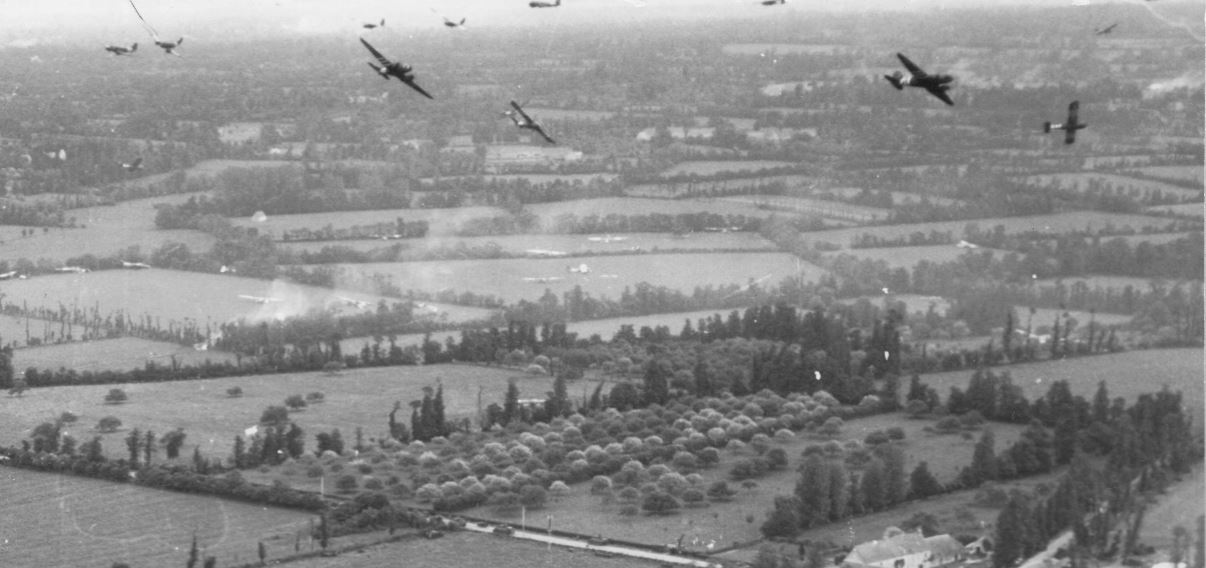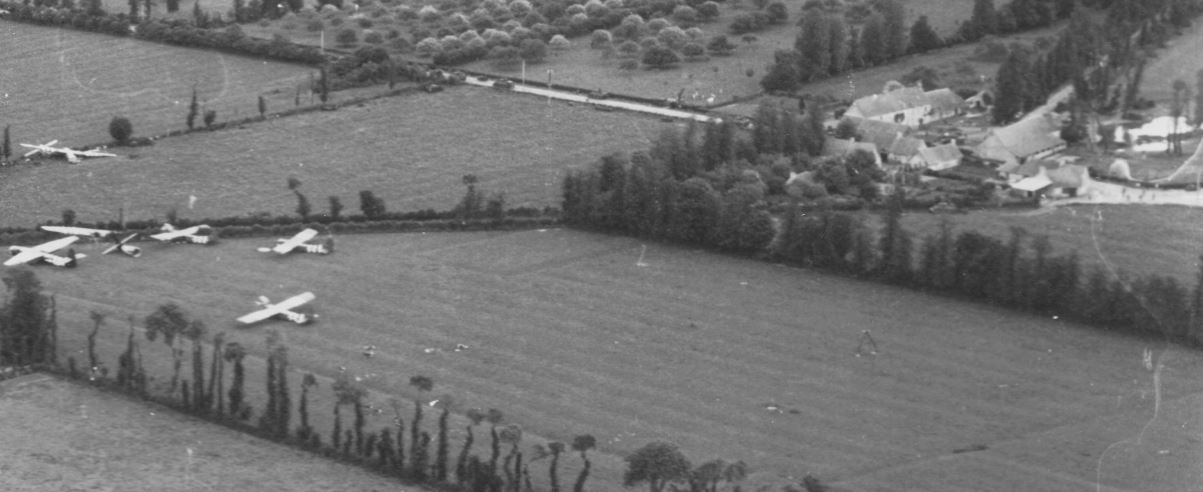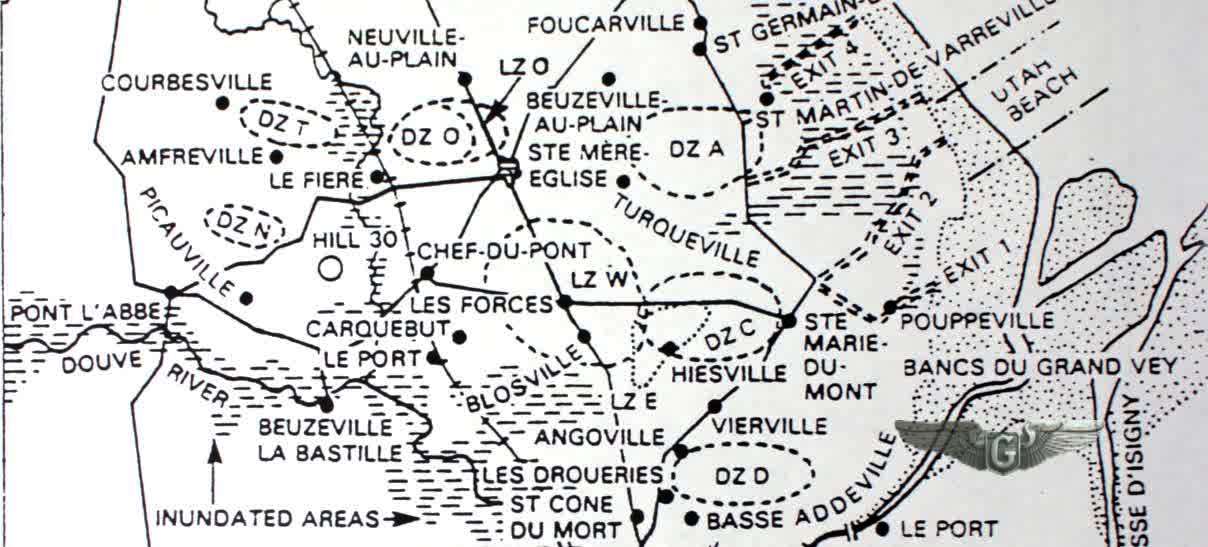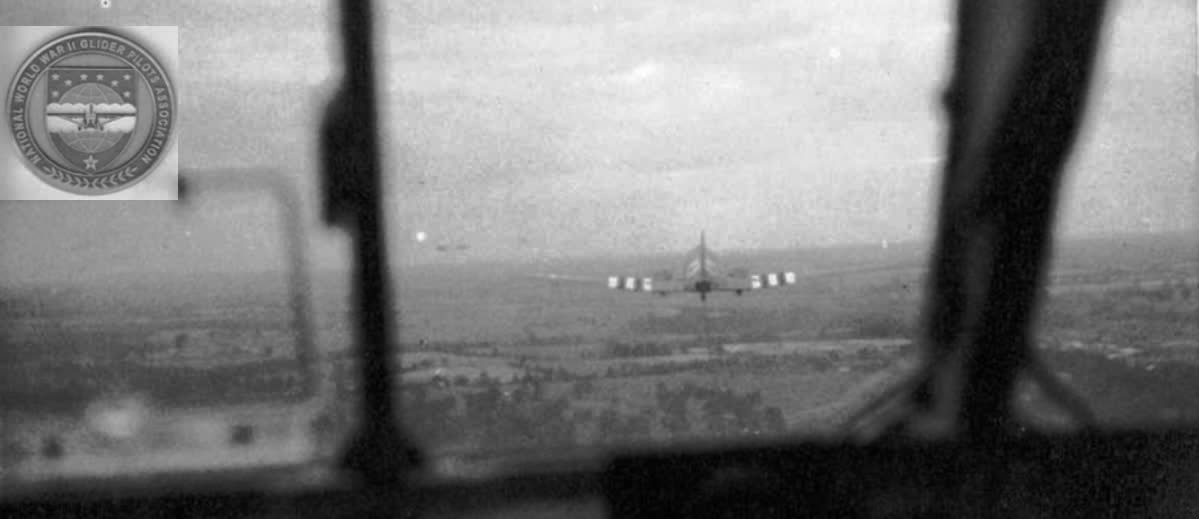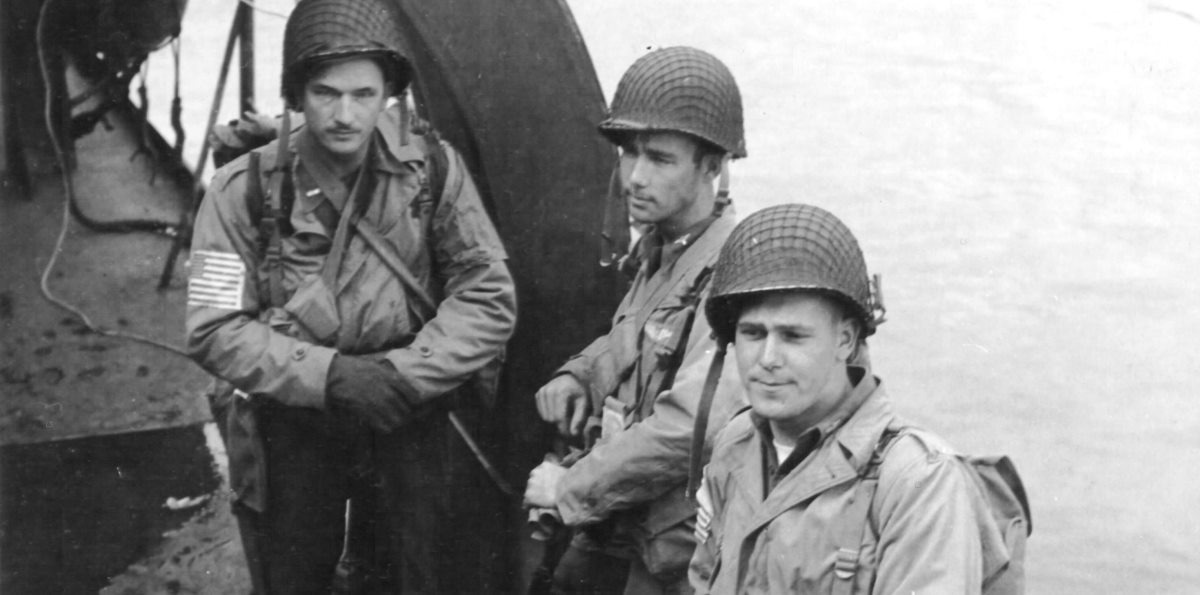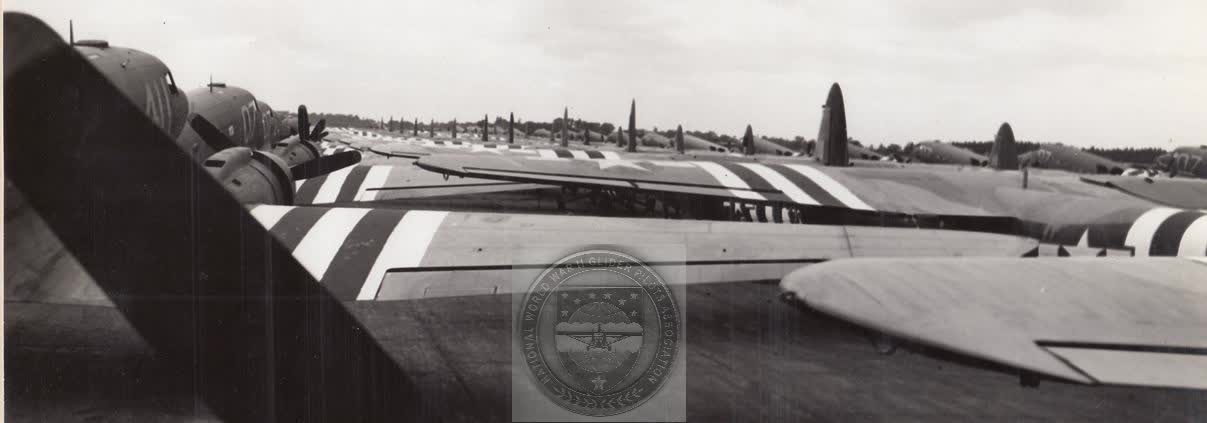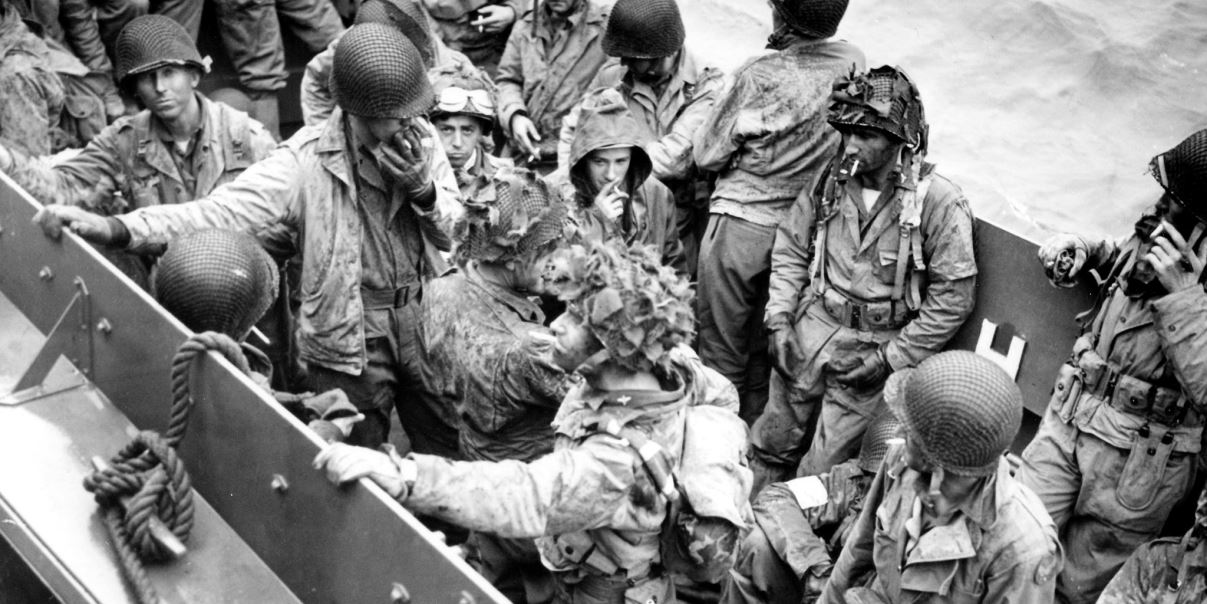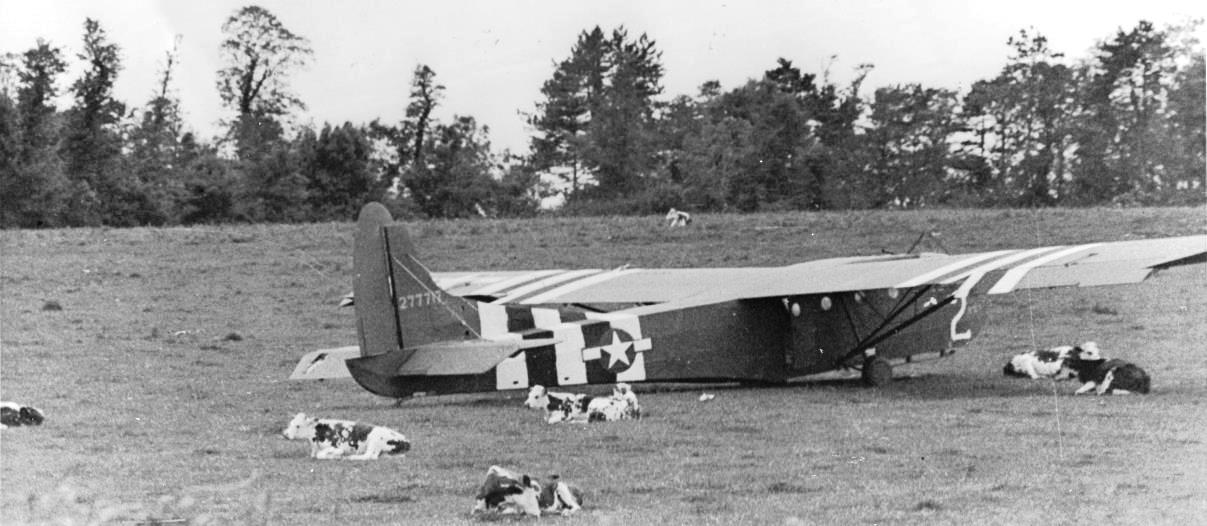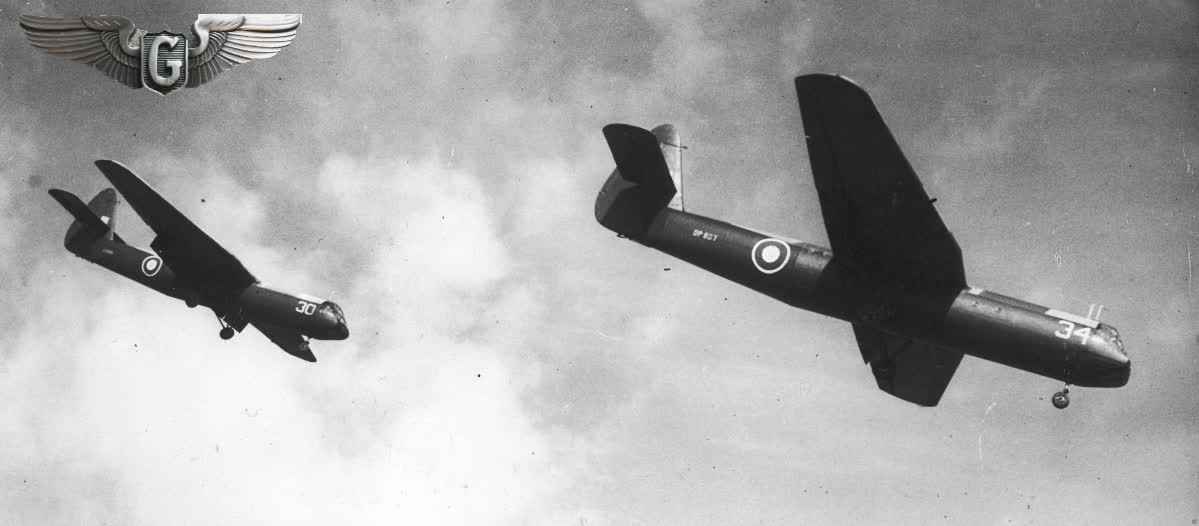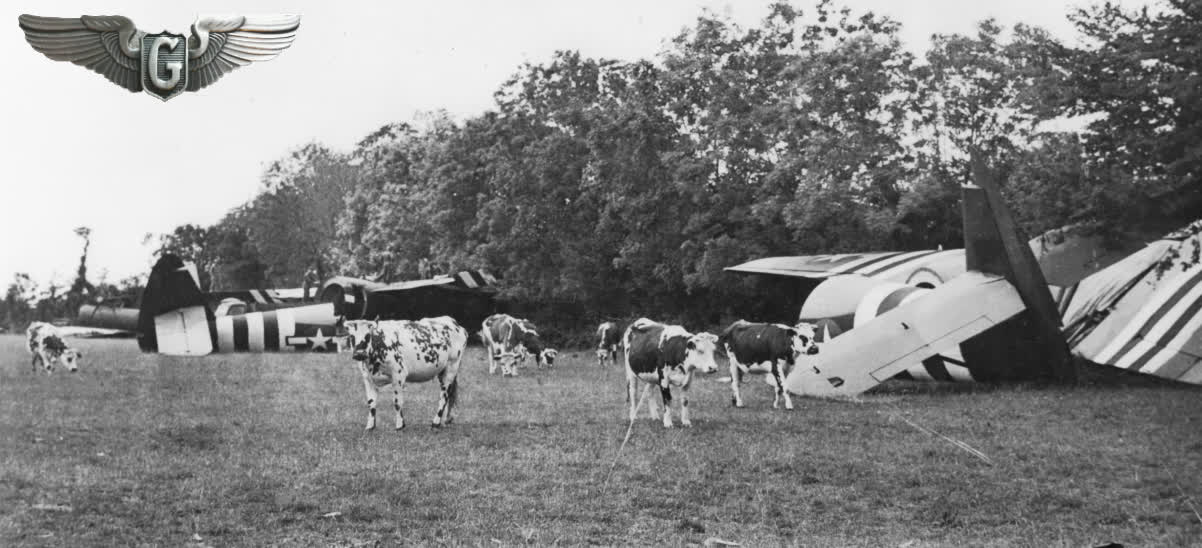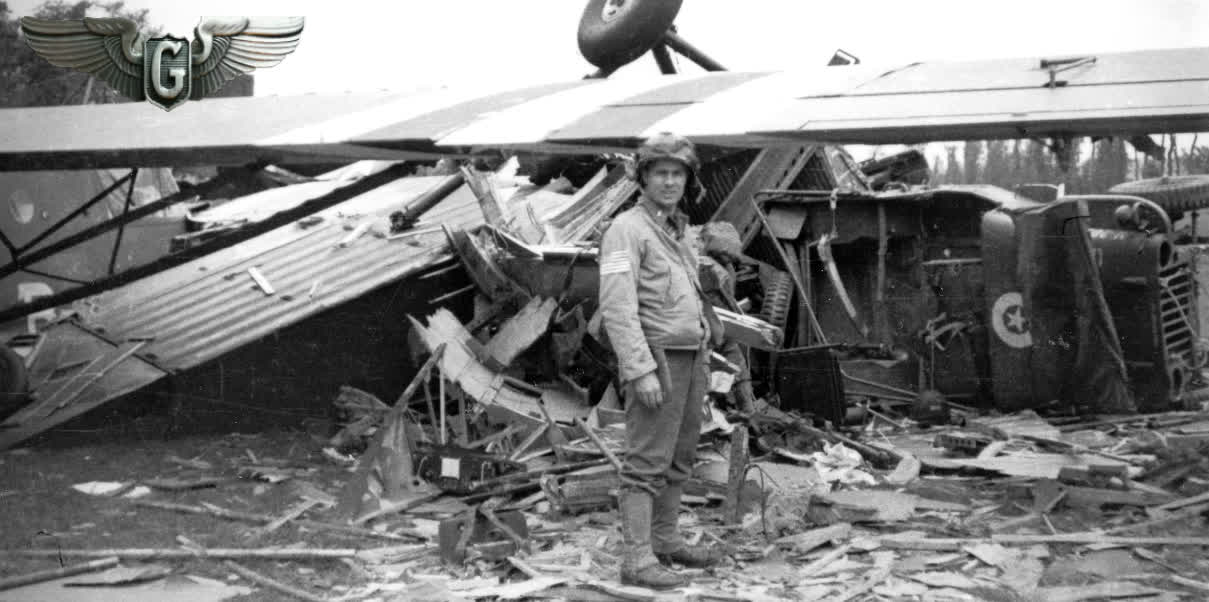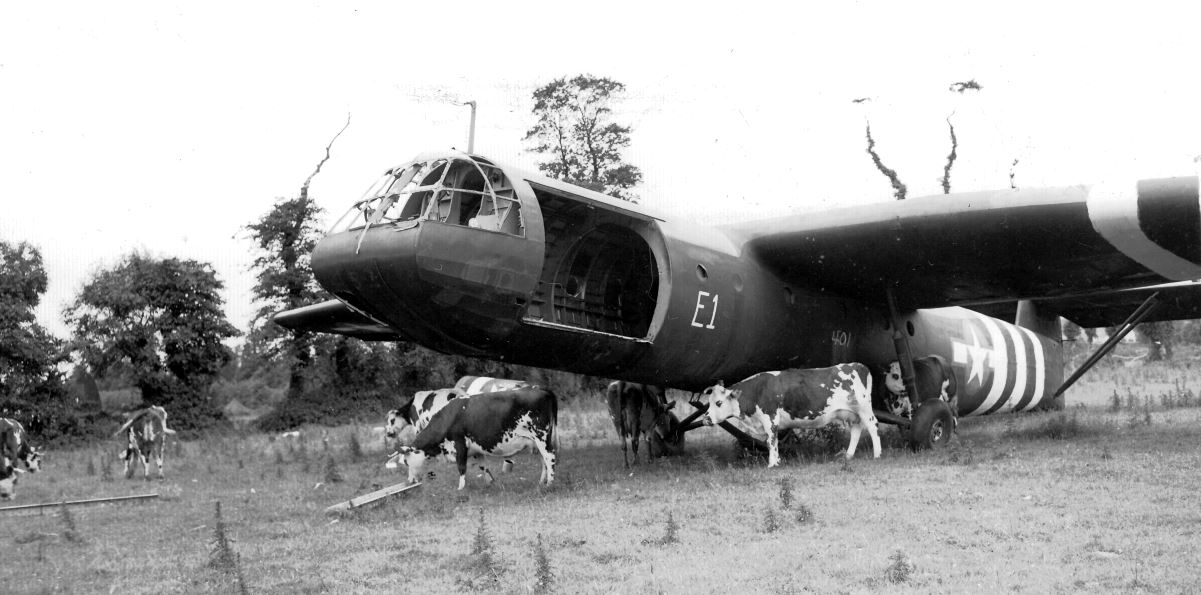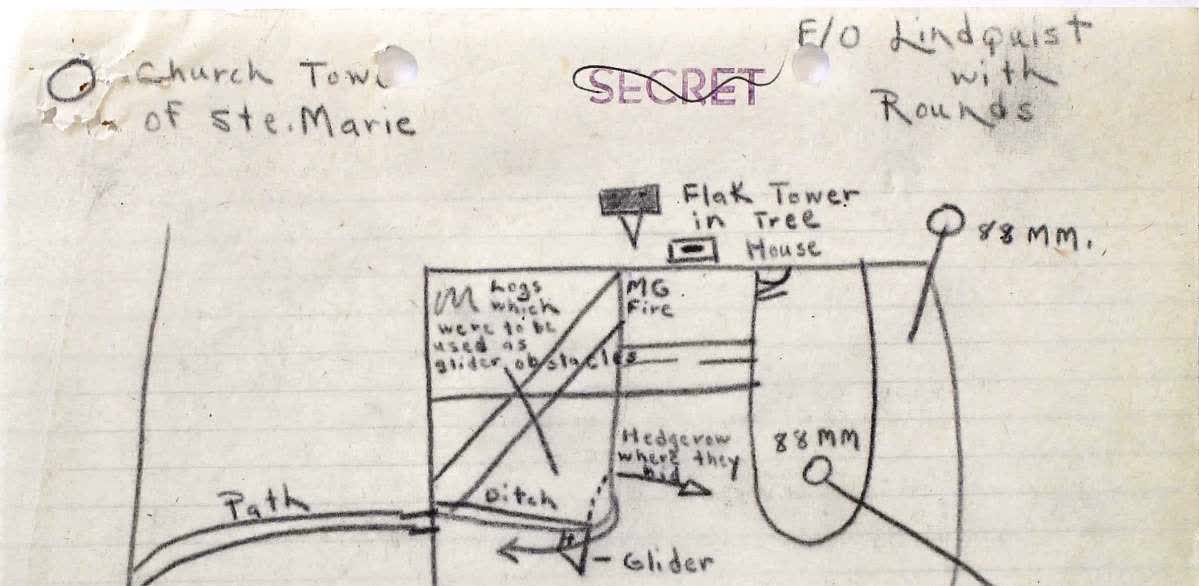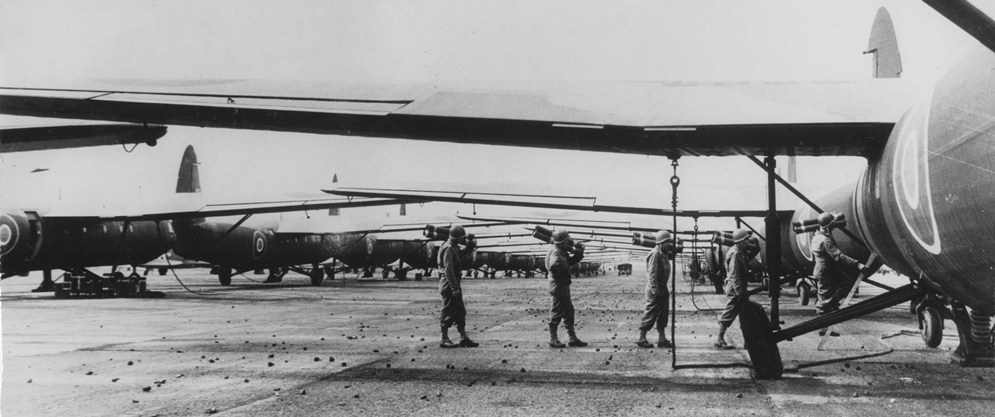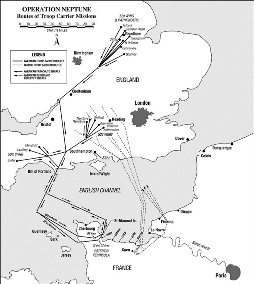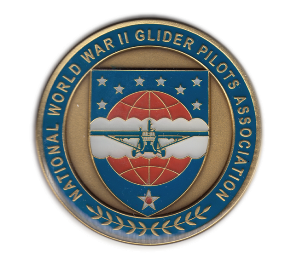National WWII Glider Pilots AssociationLegacy Organization of veterans National WWII Glider Pilots Association. Discover our History, Preserve our Legacy | ||

Photo by F/O T. Blecker Ripsom, GP of 94th TC Sqd At about 9 o’clock in the morning on June 7, 1944 (D-Day +1), glider pilots of the 441st and 439th Troop Carrier Groups landed 100 gliders loaded with the glider infantry troops of the 82nd Airborne Division near Sainte-Mère-Église, France. After the airborne troops dispersed, the glider pilots were to make their way to Utah Beach as soon as possible and as best they could get transported back to their bases in England. However they landed in the middle of an active battle zone involving the German troops and the American paratroopers and glider infantry who had landed the day before on D-Day, June 6th. The glider pilots who landed in close proximity to each other formed small groups and made their way to Command Posts in the areas they landed. There were many whole and smashed gliders all around the area of the Command Post. One group of glider pilots were gathered at a Command Post by about mid-day of June 7th and were waiting further orders. At about noon, a Navy jeep with a team of spotters for the navel guns, located off the beach, came through the Command Post. Ripsom talked with the gunnery officer who related that, except for snipers, the way to the beach was clear. He felt the snipers would not fire on a large group of glider pilots who were armed.
As named by Ripsom the fifteen crew members were: 2nd Lt. John B. Lema, 2nd Lt. Charles M. George, Lt. Warren W. Ward, F/O George L. Shaw, F/O Calvin E Redfern, F/O Evert L. Rankin, F/O Herman L. (ROY) Theurer, F/O Meyer Sheff, F/O Clifford E Muller, F/O Elden W. Mueller, F/O Warren R Barrett all of the 94th TCS, F/O Gilbert Sinclair (93rd TCS), F/O Robert L Pound (92nd TCS), F/O Arnold Wursten (301 TCS of 441st TCG) and F/O Ripsom and all were now assigned to the 94th Flak-Happy Crew. After a journey of several miles they reached the beach. As they were approaching the beach area they encountered more and more minefields. By driving within the tapped corridors marked “Cleared” they were able to avoid any mishap with a mine. Finally they had to walk the last few hundred yards to the beach where they reported to the Beach master. He gave them ship assignments for the trip back to England. Many of them were assigned to a British battleship, the HMS Erebus, for the trip home. Those assigned to the Erebus were served a dinner of British wartime rations while those assigned to American ships had steak and ice cream. They arrived in England the morning of June 8th and were transported by bus to their respective bases. ====================================1 As told by F/O T. Bleecker Ripsom of the 94th Troop Carrier Squadron in the book "Into the Valley" by Charles H. Young pg.166. Sources: Silent Wings Museum Photo Archives, Ripsom Collection
|
|
Mission Chicago 6 June 1944 SERIAL 27 |
Mission Detroit 6 June 1944 SERIAL 28 |
Mission Hackensack 7 June 1944 |
11 Serials - 514 gliders
et Patrick Elie
Preparing for the Elmira Mission, Greenham Common.
Neptune Operation air assault route from England.
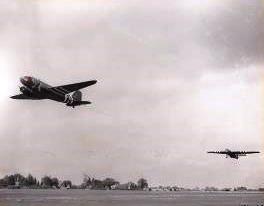
A C-47 and Horsa combination takes off from Greenham Common as part of the Elmira mission. The C-47 pictured here would later crash on a glider mission to Holland.
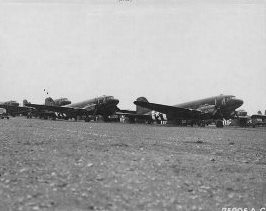
Tow planes and gliders of the 439th Troop Carrier Group are lines up on the runway before the Hackensack mission.
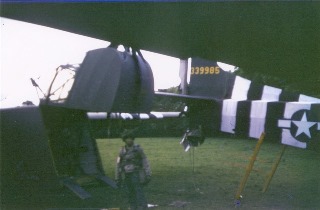
Two gliders of the very first mission in the Normandy fields.

